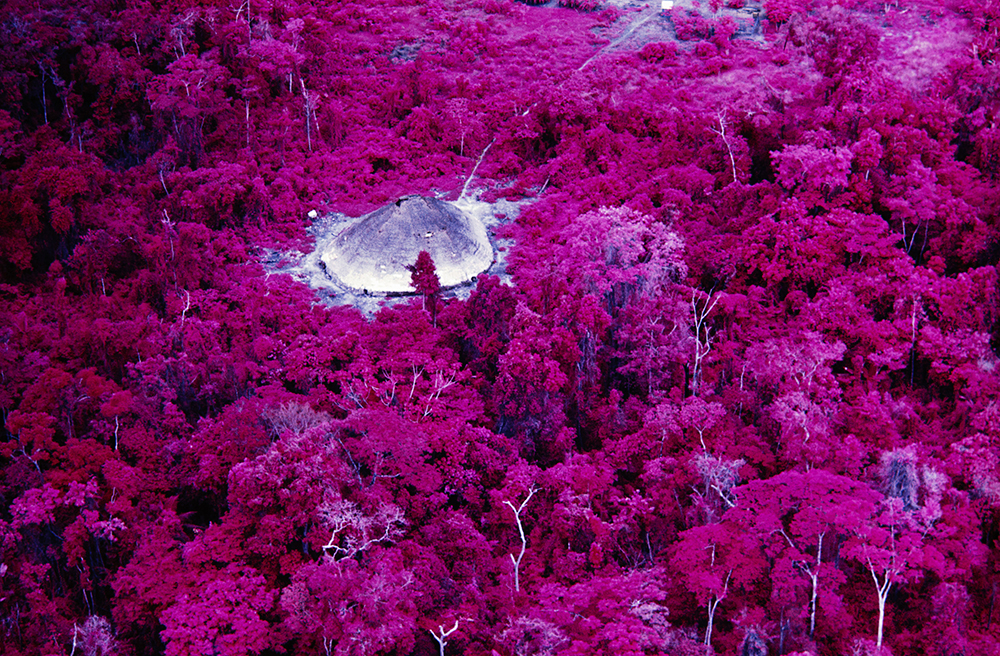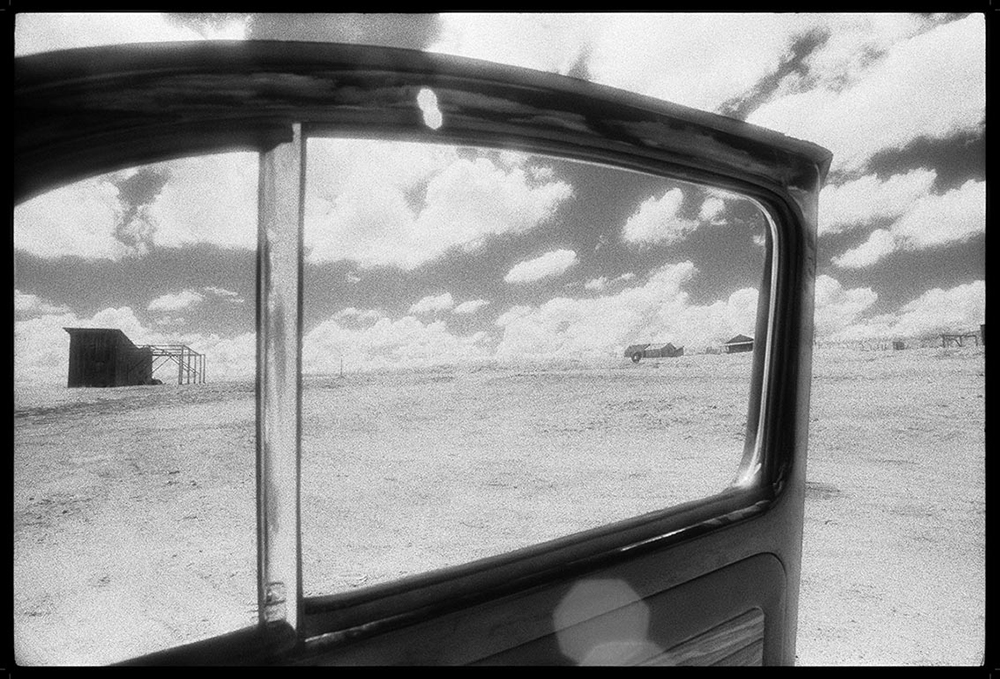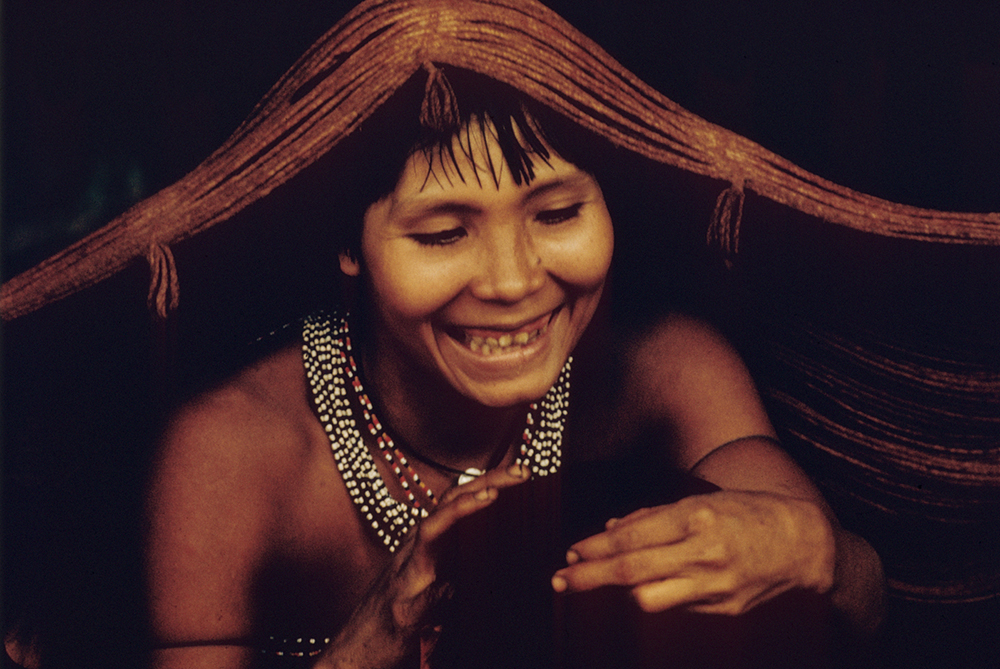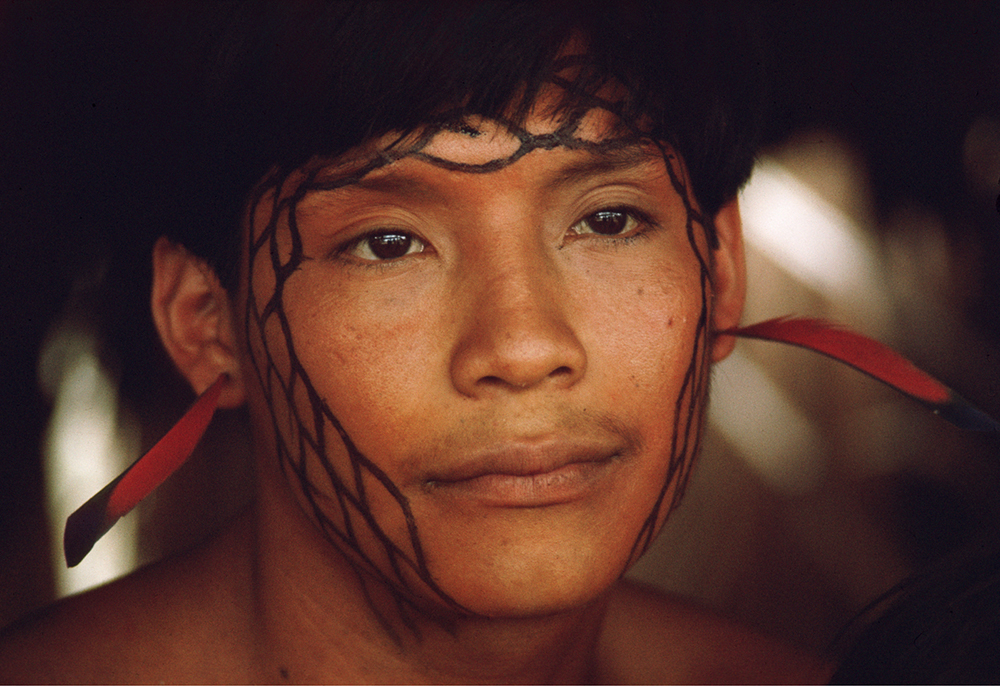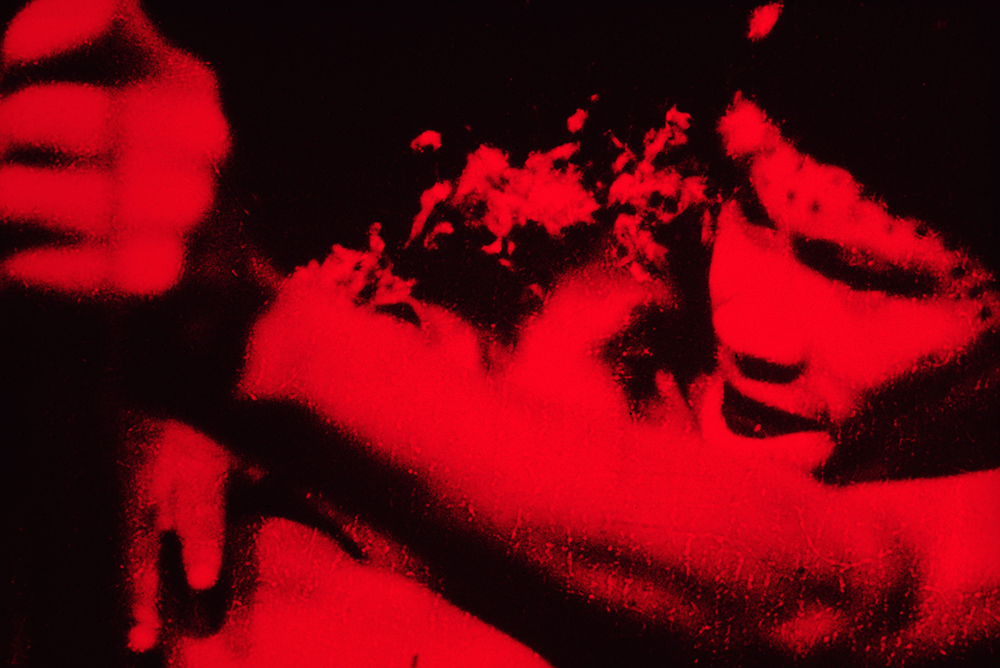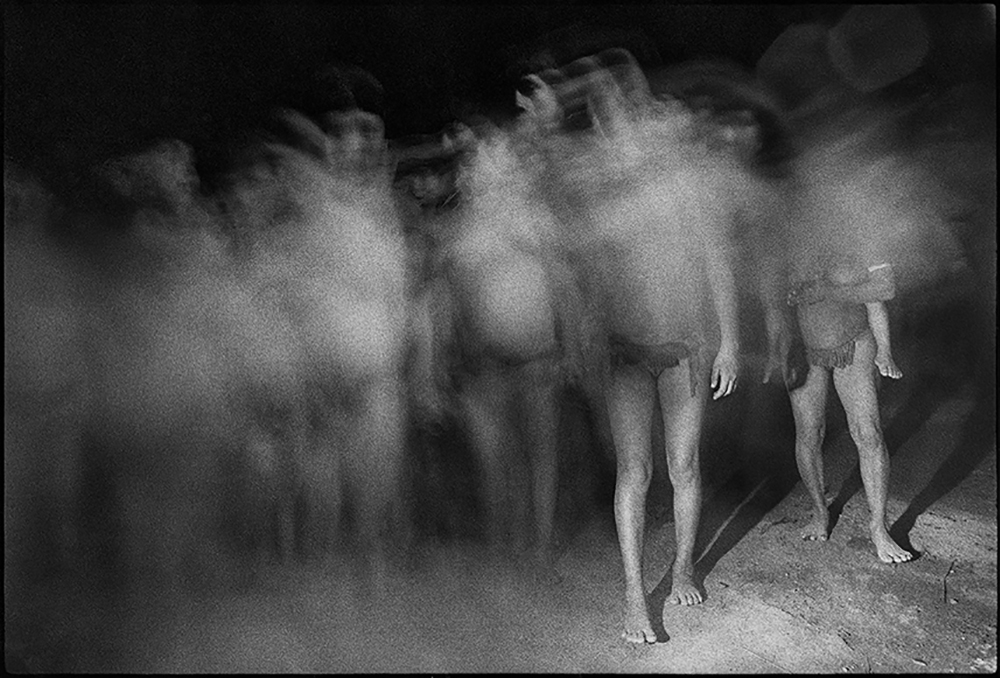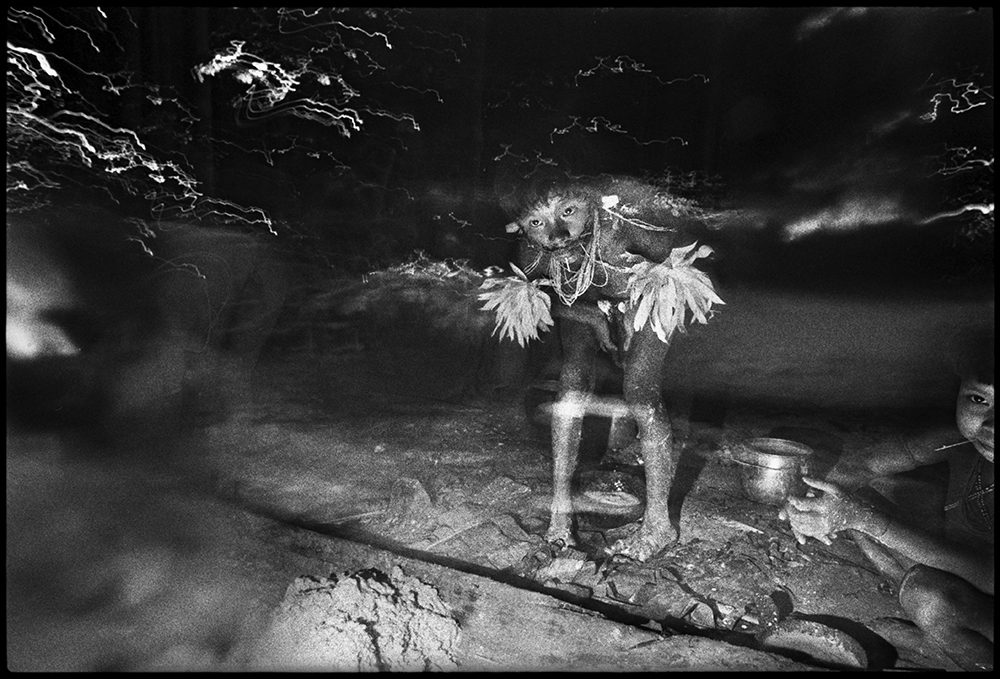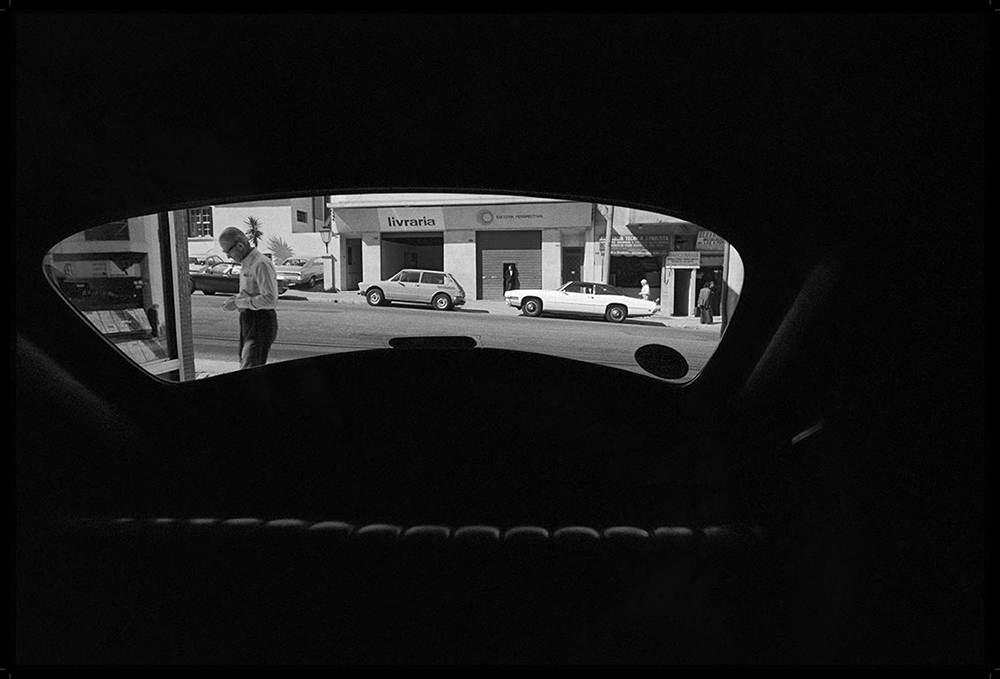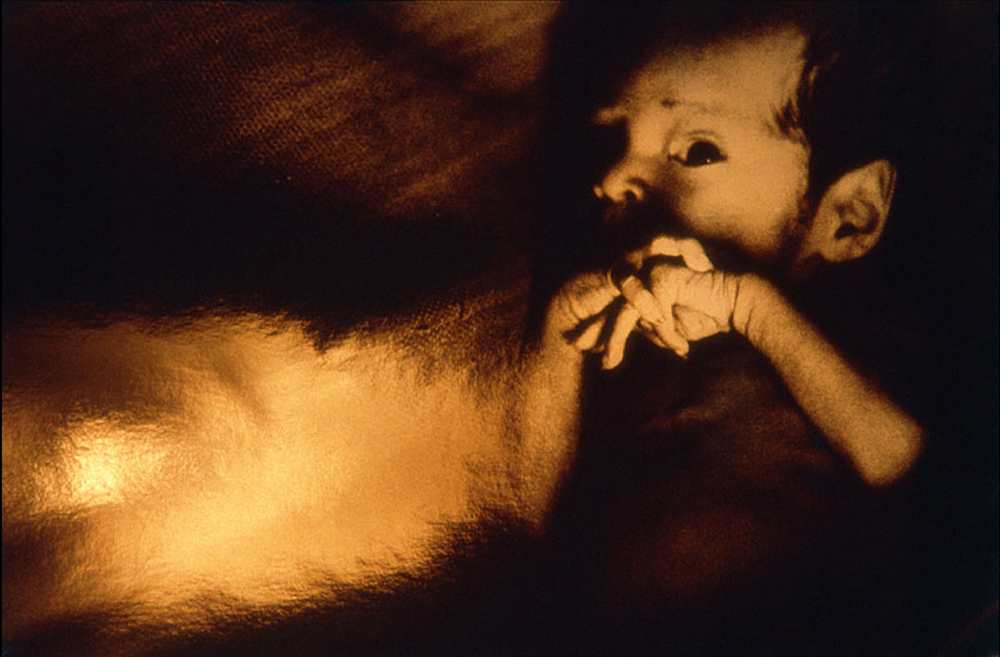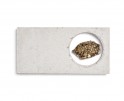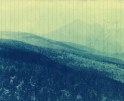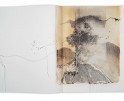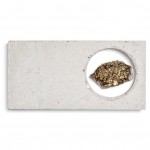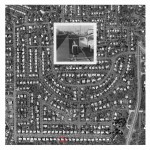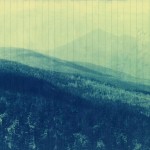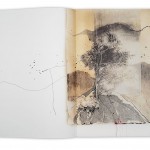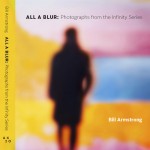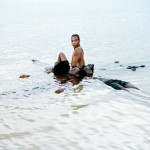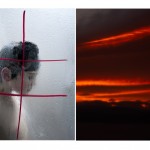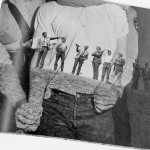Brazil Week: Claudia Andujar
This week we will turn our attention to Brazilian Photography. We’ll begin with the touching and necessary work of Claudia Andujar on the essence and transformation of the Yanomami indigenous people, we’ll delve into the rituals full of meanings of Rodrigo Braga, we’ll get to know the creative narratives of Lenora de Barros through the records of incredible video performances, we’ll be delighted with the sublime poetic fictions of Alexandre Sequeira and finally we will get to know the creative work of the acclaimed Rosangela Rennó, the photographer who does not photograph. – Ana Leal
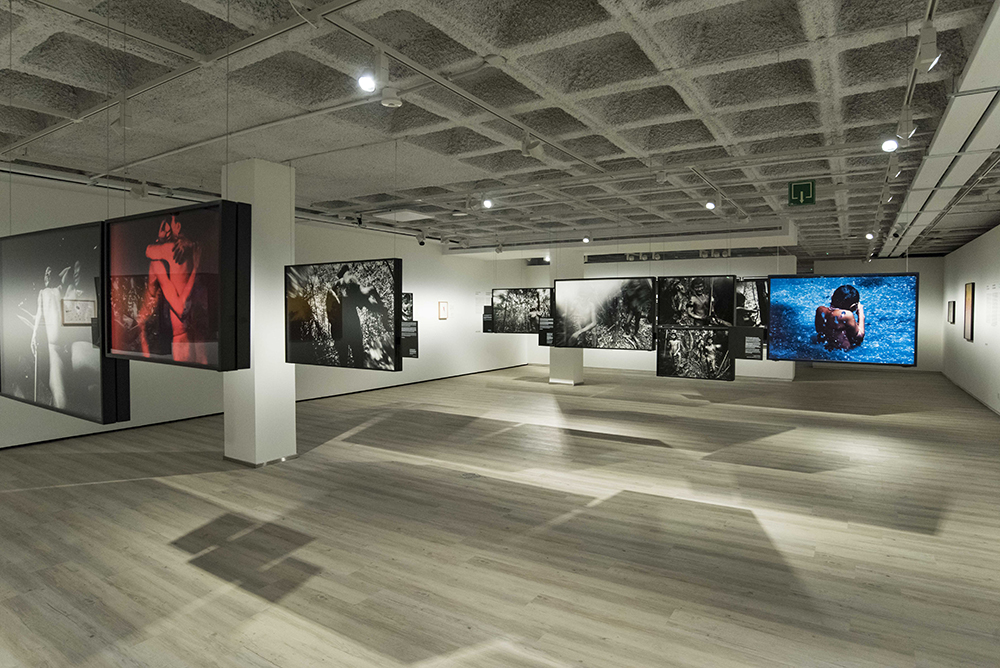
View of Claudia Andujar: the Yanomami Struggle. Fundação MAPFRE, Barcelona (2021) Foto David Campos. Courtesy Galeria Vermelho
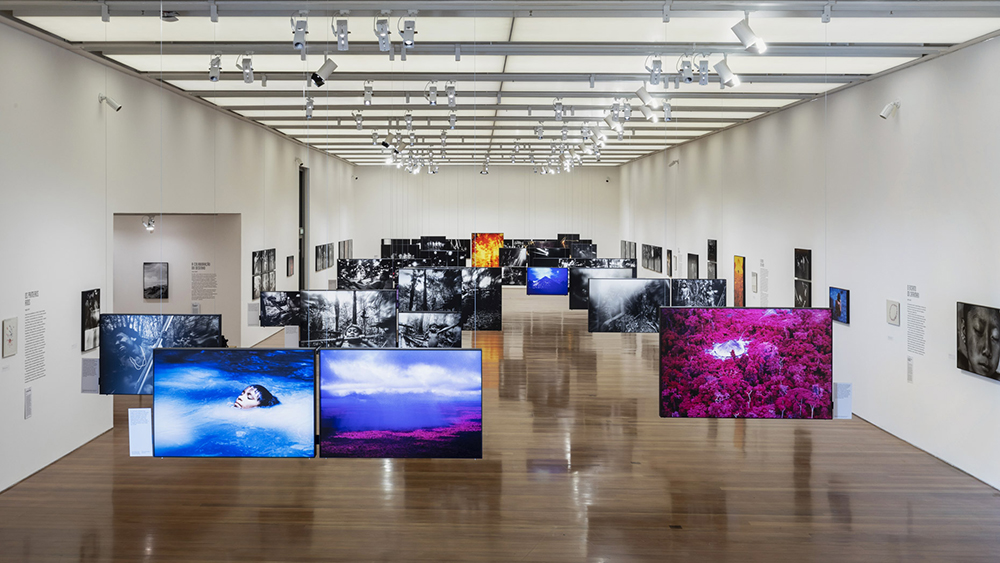
View of Claudia Andujar: the Yanomami Struggle. Instituto Moreira Salles (IMS), São Paulo (2018-2019) Foto Renato Parada. Courtesy Galeria Vermelho
Claudia Andujar was born in Neuchatel (Switzerland), in 1931. After World War II, she immigrated to the USA, and in 1955, immigrated to Brazil. Since then, the artist lives and works in São Paulo. During the 1970s, Andujar received scholarships from John Simon Guggenheim Foundation and Fundação de Apoio a Pesquisa [FAPESP] to photograph and study the Yanomami culture. From 1978 to 2000, Andujar worked for CPY [Commission Pro-Yanomami], and coordinated the campaign for the demarcation of Yanomami territory in the Amazon, that was established in 1993.
In 2000, she received the Annual Cultural Freedom Award [Photography] as Human Rights Defender from Lannan Foundation, New Mexico (USA). In 2003, she received the Severo Gomes Award from the Teotônio Vilela Commission on Human Rights, São Paulo (Brazil), and in 2005, the Award for Best Photography Exhibition from APCA [Associação Paulista dos críticos de arte], for her solo show “Vulnerabilidade do Ser” [The Vulnerability of Being], held at Pinacoteca do Estado de São Paulo. In 2008, she was honored by the Brazilian Ministry of Culture with Order of Cultural Merit 2008. In 2010, she received the Kassel Photobook Award for her book Marcados [Marked] by CosacNaify Publisher, in Kassel, and in 2018 the Goethe-Medaille 2018, in Weimar. In 2019, the Award ABCA 2018 – Clarival do Prado Valladares for her artistic trajectory. In 2020 o the award Prêmio Mérito Cultural na Fotografia – category Production of Photographic Work, from Rede de Produtores Culturais da Fotografia no Brasil, São Paulo [Brasil].
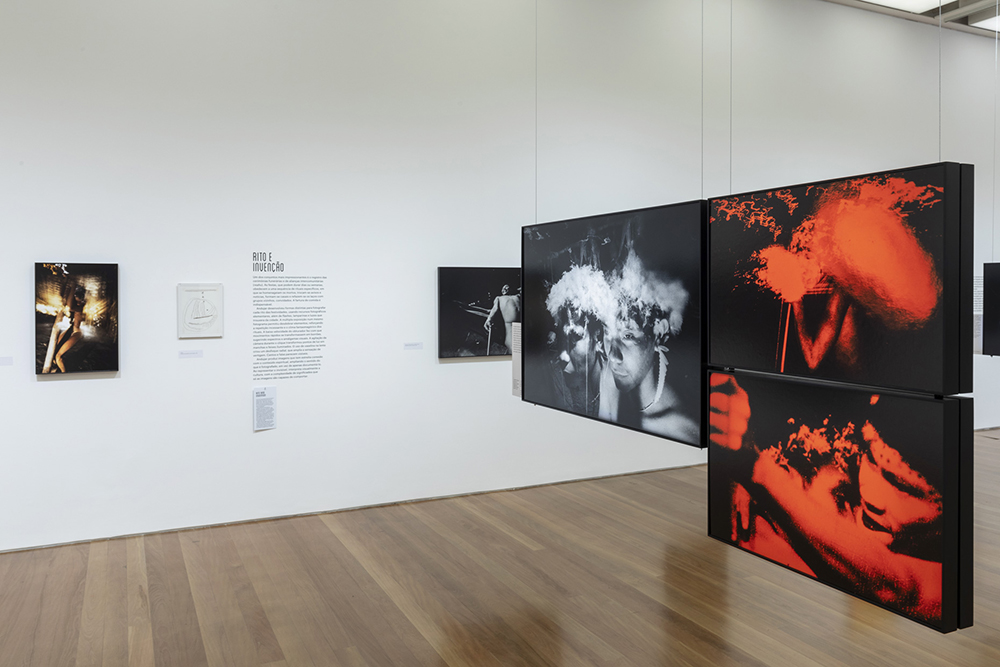
View of Claudia Andujar: the Yanomami Struggle. Instituto Moreira Salles (IMS), São Paulo (2018-2019) Foto Renato Parada. Courtesy Galeria Vermelho
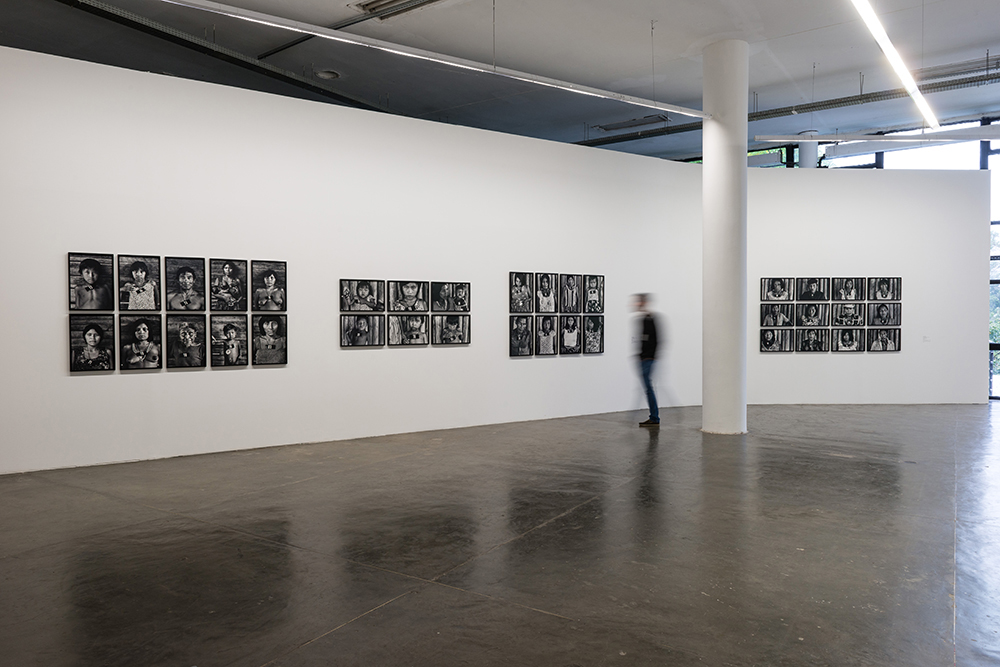
View of 30 X Bienal. Fundação Bienal de São Paulo (2013), Foto Foto Léo Eloy. Courtesy Galeria Vermelho
“I consider the series “Sonhos Yanomami” to be a turning point in my experience with the Yanomami. The images that make up the series reveal the shamanistic rituals of the Yanomami, their encounter with the spirits. From its creation, I started to conceive an imagetic interpretation of the rituals, a fact that gave me access to the genealogy of the people, joining aspects of culture and dissolving the boundaries between human beings,their gods and nature, integrating everyone into one continuous flow.
Photography is my way of communicating with the world. A two-way process in which you get as much as you give. If the photographic register of cultures can be considered a way of understanding the other, I believe that with the series “Sonhos Yanomami” I was able to understand the essence of the Yanomami people. – Claudia Andujar
I am connected to the indigenous, to the land, to the primary struggle. All of that moves me deeply. Everything seems essential. Perhaps I have always searched for the answer to the meaning of life in this essential core. I was driven there, to the Amazon jungle, for this reason. It was instinctive. I was looking to find myself. – Claudia Andujar
Sonhos Yanomami (2002) was one of the last works accomplished by Claudia Andujar from her archive of images of the Yanomami people. Playful, poetic and revealing, the series consists of 20 images created through overlaying of slides and negatives photographed starting 1971 when Andujar experienced her first contact with the indigenous people of Roraima.
As all relationships are transformative, Andujar’s encounter with the Yanomami transformed their lives permanently.
In the trajectory of Andujar, Sonhos Yanomami reflects the moment of a certain relief, of a certain rest that was only possible after the artist and her peers won the battle waged against the Brazilian federal government culminating in the demarcation of the Yanomami Indigenous Lands (TIY – Terra Indígena Yanomami) in 1992.2
The installation Genocídio do Yanomami: morte do Brasil was originally presented in April 1989, at the Museu de Arte de São Paulo [MASP].4 The purpose of the show was to honor Davi Kopenawa Yanomami, who in 1988 received the UN Global 500 Award, in addition to raising public awareness about the situation faced by the Yanomami people, who at the time suffered from diseases caused by contact with illegal miners.
Coincidence or simple repetition of patterns, a little more than 30 years after the first public presentation of the installation, the original people find themselves living under what might be an even worse situation. Today, in addition to the estimated more than 20,000 illegal miners installed on Yanomami land and a virus that travels through the air, indigenous peoples are affected by governmental necropolitics which has horizontalized the genocide. The humanitarian values, characteristic of the social welfare state implemented in the 20th century, are evanescing. The prevailing feeling is that we are no longer able to imagine a future because the powers that be are preventing its appearance, annihilating beliefs and dreams. Acting on the living, analogical body, the necropolitics discards the possibility of a future and establishes dystopia as the present in a time when there is no time. – Marcos Gallon
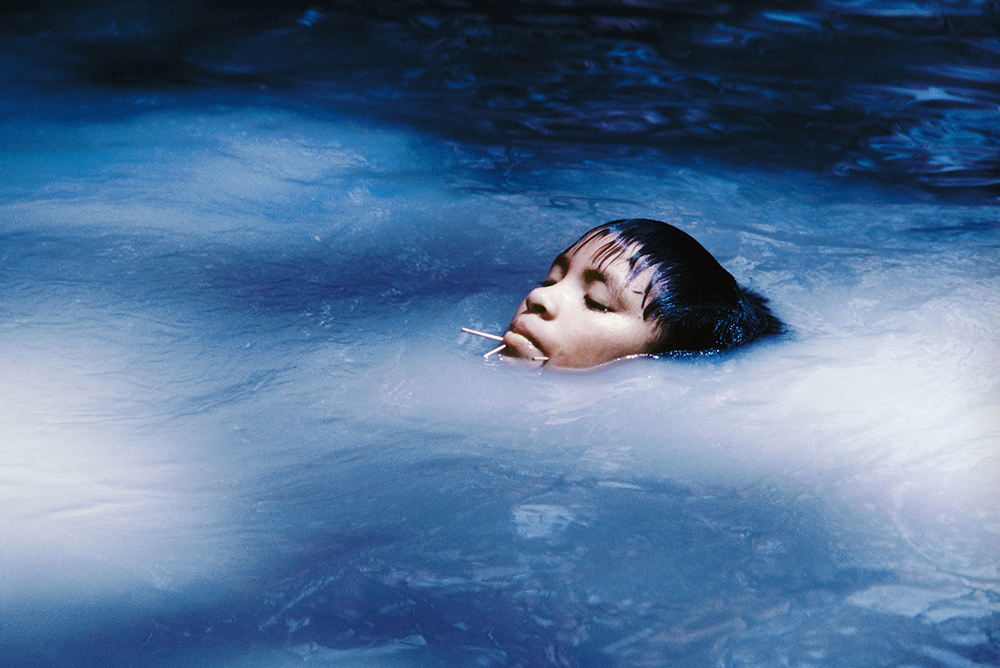
©Claudia Andujar. The young Susi Korihana thëri in a creek. Catrimani, Roraima – from the series The Forest (1972-1974). Courtesy Galeria Vermelho
“CLAUDIA ANDUJAR AND THE FEATHERLESS VULTURE: APPROXIMATIONS BETWEEN ART AND LIFE”
by Miguel Chaia
Andujar always focuses on the human creature and is concerned about the paradoxes that involve the species. In the Yanomami series she seeks to capture the being and not the Indian: in these photographs of indigenous people she highlights the profound gaze, the body in its gentleness, in its power and its tragedy. In the urban photographs she deals with ecology and not cityscapes: in these urban works she gives expression to the conditions of day to day experience, to the velocity of the things and the disorder constructed by civilization.
She is an artist and not an anthropologist. For this reason she combines ethics and aesthetics. Her works are obtained by way of sharing, through the artist’s experience of learning by living with the Other, by her awareness of difficult sociability and her insistence on making art. She obtained first-hand experience of the different spaces and exchanged information with the environment. It was in this way that in 1976, for 16 days, Claudia Andujar undertook an endless voyage, aboard a black Volkswagen Beetle. She left the city of São Paulo, went north to Mato Grosso, passed through Manaus, crossed Rondônia, to arrive in Roraima.
When Claudia Andujar arrived at her supposed destination in Roraima the Indians received her exclaiming watupari (vulture being). The black Beetle, used for locomotion during the trip, appears to the Yanomami people as a vulture that lost its feathers and nevertheless has flown far.
Miguel Chaia is a researcher with the Nucleus for Studies in Art, Media and Politics (NEAMP), of the Pontifícia Universidade Católica de São Paulo (PUC-SP), where he is a professor. He has authored various texts on Brazilian art.
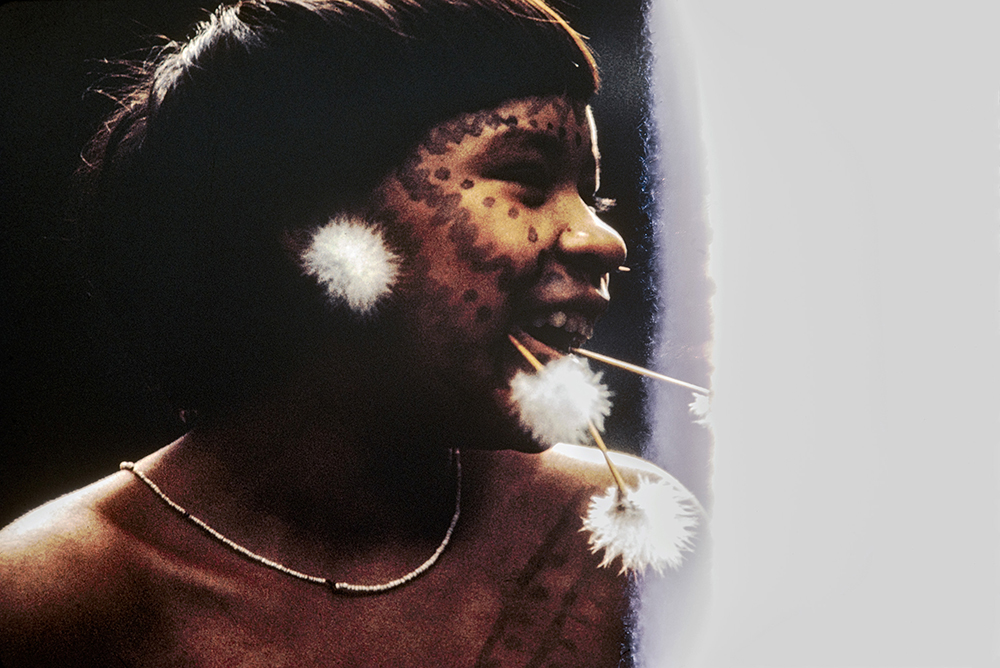
©Claudia Andujar. Rita Korihana thëri, Catrimani – from the series The Forest (1971-1972). Courtesy Galeria Vermelho
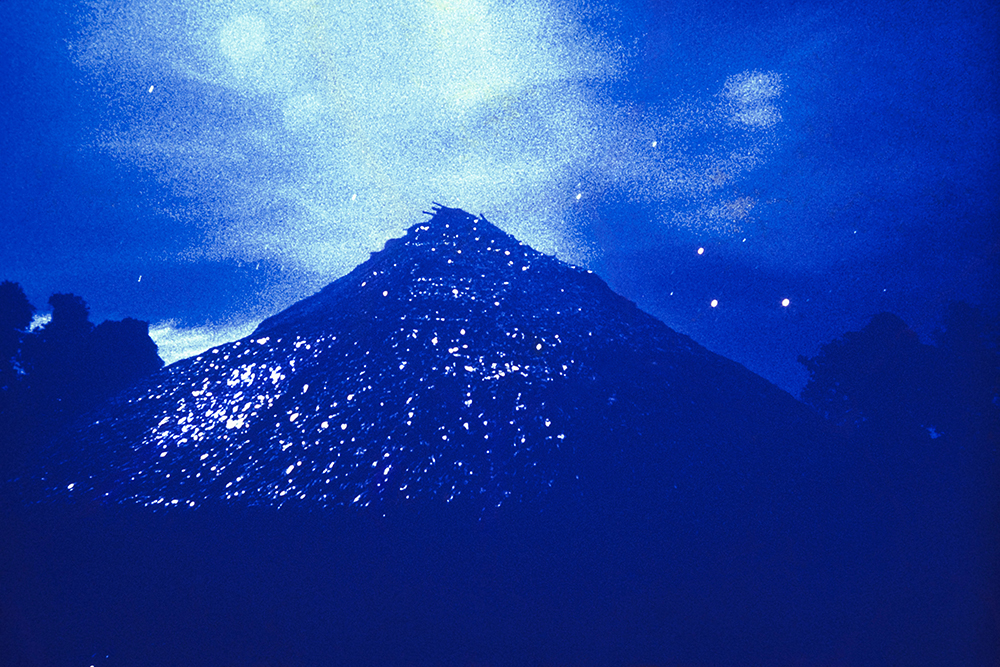
©Claudia Andujar. Maloca from Korihana thëri, Catrimani – from the series The Forest (1972-1976). Courtesy Galeria Vermelho
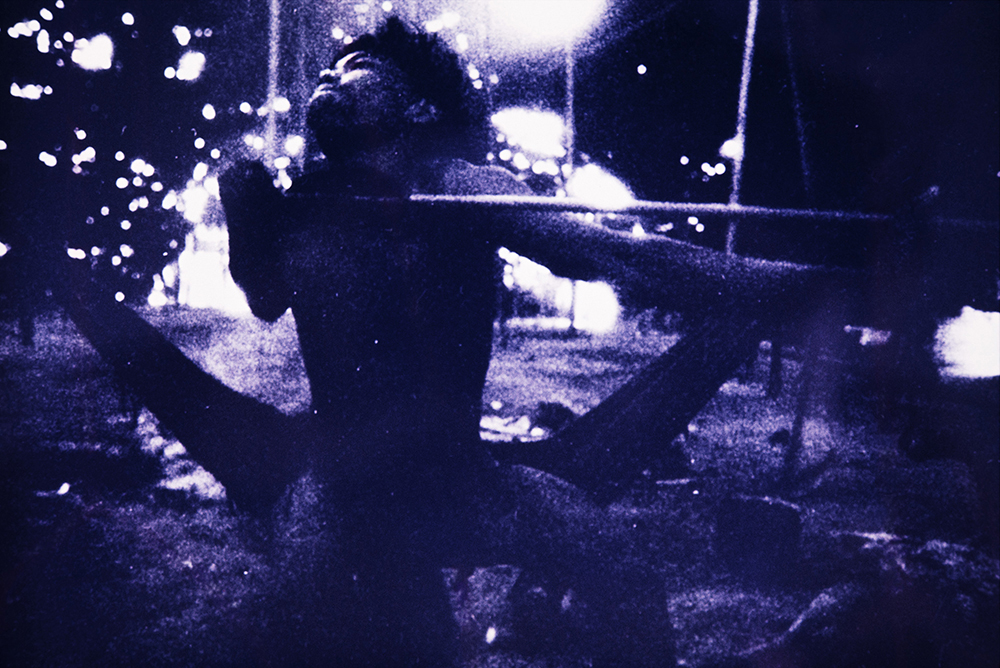
©Claudia Andujar. Man controls arrow in maloca, Catrimani – from the series O reahu (1974). Courtesy Galeria Vermelho

©Claudia Andujar. Residents of the Xaxanapi village enter the Korihana thëri maloca with their best ornaments, singing and waving arrows to start the ceremonials of the festival, Catrimani – from the series O reahu (1974). Courtesy Galeria Vermelho
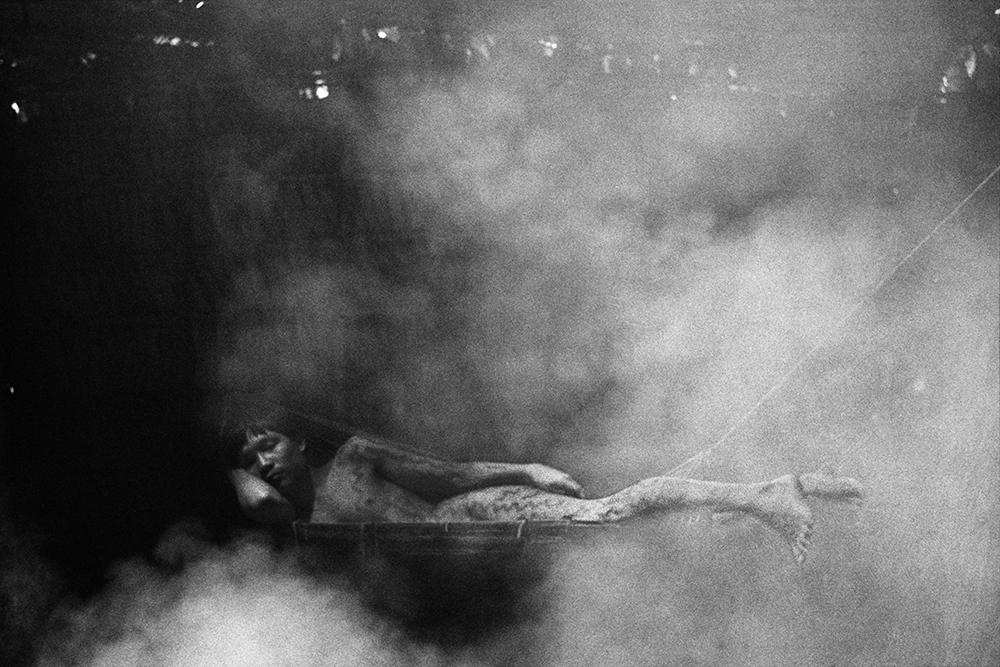
©Claudia Andujar. Gold trade, Boa Vista – from the series Consequences of contact (1989). Courtesy Galeria Vermelho
Born in Northeastern Brazil and based in São Paulo, Ana Leal is an artist who works primarily in photography, considering it to be a tool for both depicting and escaping from reality.
Inspired by minimalist traditions and impressionist painters her images result simple and often abstract. She captures imagery she observes or stages shooting with 50mm lenses.
Leal is a Gold Award winner on the 2020 Tokyo International Foto Awards and the 15th Julia Margaret Cameron Award Winner both in the abstract category. She completed her Master of Fine Arts at Miami International University of Arts and Design (2018) and her work is part of the collection of the Florida Museum of Photographic Arts – FMoPA.
IG : @analealphoto
Posts on Lenscratch may not be reproduced without the permission of the Lenscratch staff and the photographer.
Recommended
-
Salua Ares: Absense as FormNovember 29th, 2025
-
Ricardo Miguel Hernández: When the memory turns to dust and Beyond PainNovember 28th, 2025
-
Pamela Landau Connolly: Columbus DriveNovember 26th, 2025
-
KELIY ANDERSON-STALEY: Wilderness No longer at the Edge of ThingsNovember 19th, 2025
-
Jackie Mulder: Thought TrailsNovember 18th, 2025

